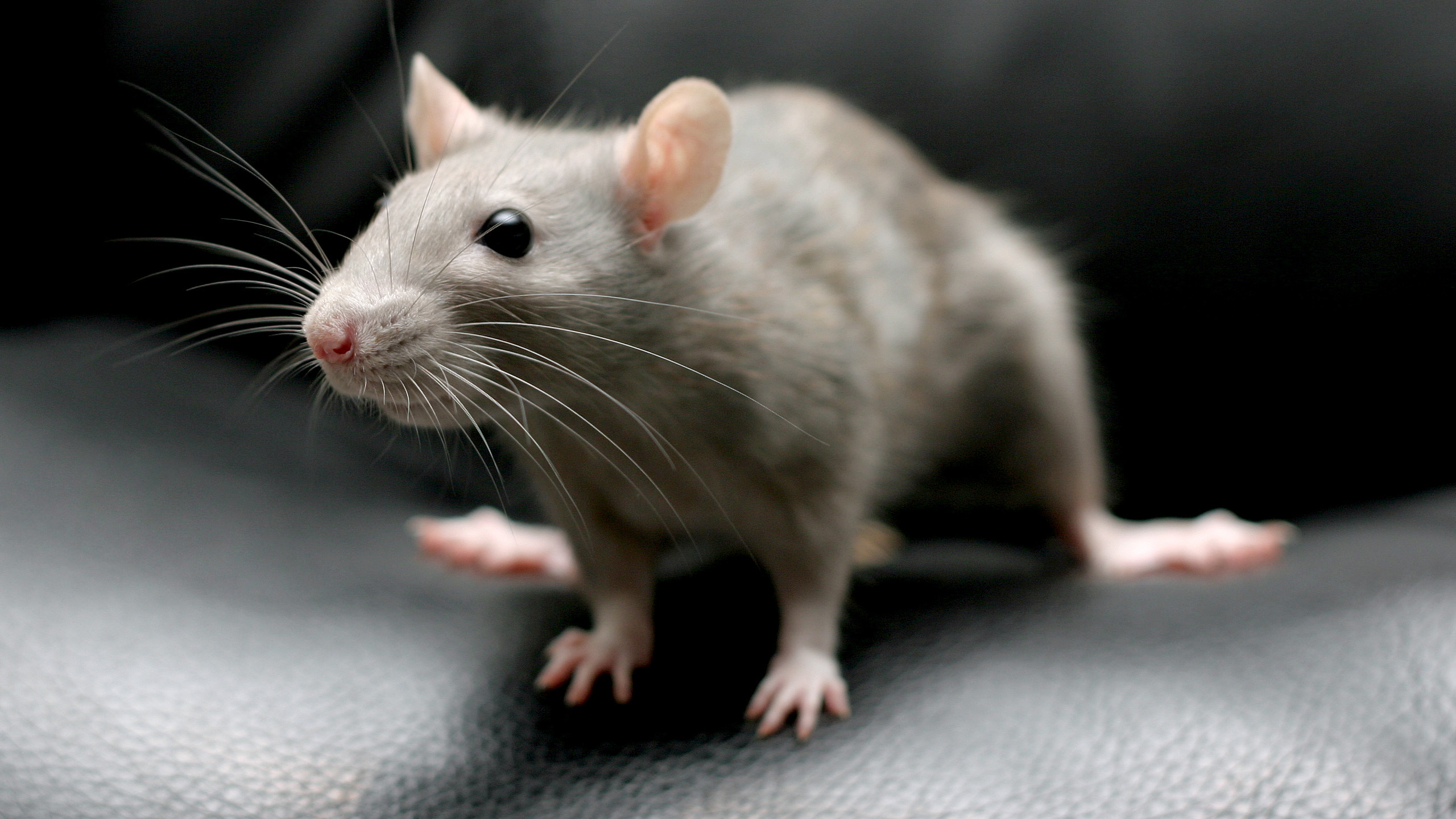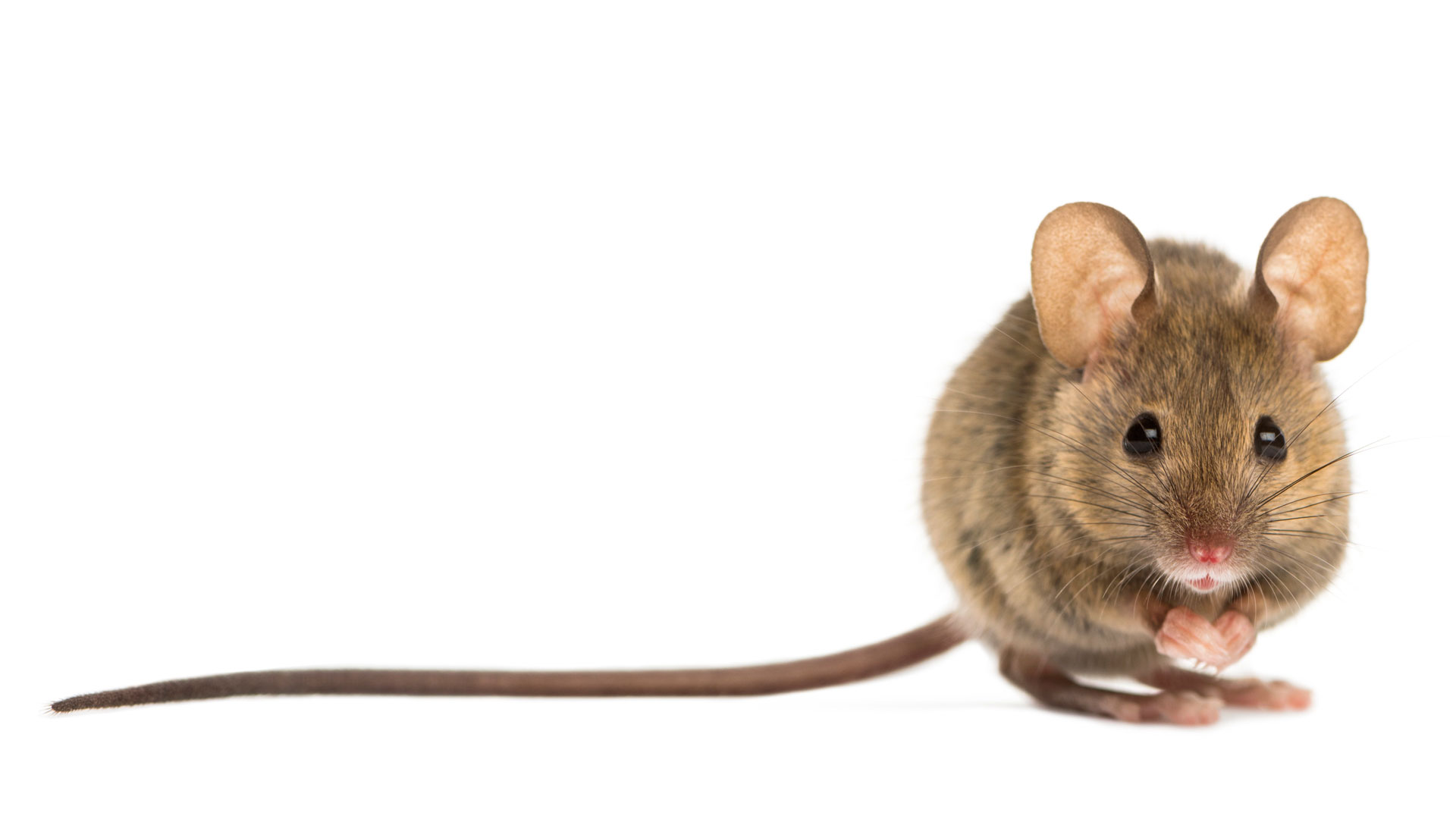
Want to know how to get rid of rats – fast? Rats thrive in sewers but very occasionally will find their way into our gardens, sheds and garden rooms – and sometimes even inside the house.
If you're not quite sure if rats are what you're dealing with, take a look at our how to get rid of pests guide to identify the critter in question.
They're usually looking for food, but they breed quickly, cause damage by gnawing through building materials and pose a serious health risk.
The experts at the British Pest Control Association explain more: 'Rats communicate and mark their territory by urinating everywhere they go, representing a significant public health risk.'
'They can carry many nasty diseases, which can spread to humans, normally through rats’ urine or body coming into contact with food preparation areas.'
Rats live in large families – and a single breeding pair can multiply to 1,000 rats within a year. So killing a few here and there won't do the trick permanently: instead, prevention is vital.
So, how to prevent and get rid of rats, and fast? Use our advice below to find out how.
Get small space home decor ideas, celeb inspiration, DIY tips and more, straight to your inbox!
- Rats or mice? Check our guide how to get rid of mice to see if these rodents might be haunting your halls.
What are the signs of a rat infestation?
When figuring out how to get rid of rats, the first thing you should do is scope out where they might be hiding.
Indoors, you're likely to hear scratching in cavity walls, in a cellar or in the loft. But look outside (and in) for more obvious signs, which include:
- Rat droppings, which are oval-shaped, about 10mm long and look like a large, blackish/brown rice grain;
- Pets will tell you: if your cat or dog is paying particular attention to one part of the garden (perhaps a gap under a garden room or beneath a deck, or a pile of leaves), have a closer look;
- Rat burrows, often near the food source (ie, your veg patch);
- Teeth marks on anything from fencing to the garden hose.

Identify reasons rats are infesting your home or garden
Rats prefer a quiet life, living in the shadows, scurrying about in sewers and, ideally, keeping well away from us.
So why are you seeing them around your home? Other than the issues you can deal with, such as food sources being accessible to them (see below), there are a number of reasons why they might be appearing.
- Perhaps there are building works nearby that have destroyed their home – it needn't be a big building site, even a basement conversion nearby might be enough to dislodge a colony?
- Have the drains or sewers underneath your house flooded or blocked recently? This can precede a rat infestation.
- Is there an empty house or derelict building nearby? If a colony has set up there, they might be looking further and further afield for food.

Get rid of rats by removing food sources
If you've just moved into a home, are renting with other, less careful tenants or have slipped into bad habits, you might be making your home a magnet to rats.
The best way to keep rats away in the first place is by keeping your home's exterior – back and front – clean and tidy. That doesn't just mean ensuring that food waste is carefully stashed in a trash can or bin with a lid that can be fastened down, it also means ensuring anything rats can eat in your garden – from vegetables on a compost heap to fallen fruit to bird food – are dealt with. It might be that your compost heap has to go in a composting bin, while fallen fruit shouldn't be left lying around.
Haven't got a compost bin yet? Here are a few of the best compost bins to invest in.
If you've recently planted out new bulbs or have a new vegetable garden, protect it under soil netting laid just beneath the soil. Look out for signs, too, of small holes and chewed netting – hungry rats can be determined.
Rats will also seek out sources of water, so if your garden tap is dripping, you have a shallow pond or a bird bath, you might like to ensure they're kept dry while you deal with the problem. This extends to your dog or cat's food and water bowls – bring them inside to make your home's exterior less attractive to rats.
Get rid of rats by removing their shelter
We're constantly encouraged to create piles of wood and garden clippings so that hedgehogs in gardens can nest. But if the shelters you've created are being inhabited by rats instead, clear them away and cut back overgrown areas while you deal with the rat infestation.

How to get rid of rats with poison – and professionals
Despite various sources suggesting peppermint oil and cat nip as good ways to get rid of rats, rat poison is, unfortunately, really the most successful method for dealing with a rat infestation. However, there's no point in putting down poison if you've not dealt with food sources and shelter.
The best advice with using rat poison is to employ professionals. The experts at the British Pest Control Association explain more:
'Rats are hard-wired to survive. They are adaptable, highly mobile and breed rapidly. As a result, rat control can be an uphill task for the untrained individual. For any rat infestation, we would always recommend contacting a professional pest management company.'
Other than the fact that it's ill-advised to place rat poison near where you grow food, that any rats that die from poisoning within your house or garden will make a fabulous meal for maggots, will smell terrible and release particulates that can make humans and pets really ill, the poisons themselves can kill children and pets and can make adults very sick.
'Thought needs to be taken when placing poison or traps to ensure they are in a safe and secure place out of reach of non target animals, children and pets,' says BPCA.
'Knowing how much, where, and when to deploy products is where professionals are able to take control of situations efficiently. There’s also a growing issue with resistance, due to incorrect choice of rodenticide or widespread use by members of the public.'
How to get rid of rats with traps
There are various options available, should you not want to or be able to use rat poison. Live traps are small cages laden with food bait; these might be a first option if you're not sure what type of infestation you're dealing with and want to find out more.
Snap traps are designed to kill rats instantly, and may do the job if your rat infestation is a small one that's not yet taken hold. Electrocution traps are another method, but one that's much more expensive. Still, the effect is instant so, in theory, the rats won't suffer.
How to get rid of rats – or keep them away – with pets
If you want to prevent a rat problem (rather than see one off), getting a dog or cat is a good way to do so.
It won't get rid of a colony of rats, but having a pet will deter them and alert you to a potential problem.
Seal gaps to stop rats getting into your home
Like mice, rats will try to enter your home through any gaps or cracks in walls, doors, floors and even through the roof. And, like mice, they can chew through all sorts of materials.
Inside the house and out in the garden, look for small holes (a rat can squeeze through a coin-sized hole) and use an appropriate sealant to block them – you can buy a mouse and rat gap sealant that they can't gnaw through.
Make sure, too, that there are no hollows under the shed, garden room or summer house that can serve as a potential hiding place/nest. Plug these with wire mesh or, better still, brickwork.

What to do if you find rats indoors
As well as the loft or a cellar, you might find rats inside kitchen cupboards, behind the oven and fridge – in other words, anywhere dark they can shelter. The BPCA describe how unsettling this can be:
'It goes without saying that rat infestations can have a devastating impact on personal wellbeing. Aside from the health risks, the sound of them scuttling around the home, the evidence of their presence and the damage they can cause do little to help householders sleep easy.'
How to get rid of the rats and fast? Call in the professionals.
If you can't get an immediate appointment, fill the rat holes with wire mesh, which they can't chew through. Then use a strong filler or expanding foam. The fillers won't deter them long term, but the wire will slow them down while you deal with the problem.
Then, ensure you've taken care of any food they might be able to access, as advised above.
How to repel rats before they invade

1. Secure your trash to deter rats
This is the most obvious – and the most important – step. Rats are opportunists and would rather not work too hard for their food, so an open trash can is an open invitation to them. So, switch to a bin with a heavy or lockable lid, and never leave trash bags lying around the bin.
The BPCA recommend the following: 'It’s a good idea to give your indoor and outdoor bins a rinse with disinfectant and hot water. Alternatively, hire a reputable company to do it for you.'
'Not only will this help with the smell that attracts rats, but it’ll also mean if there are any pathogens brought in by pests, you’ll neutralise them. Always wear gloves!'
Likewise, if you have a compost heap in your garden, don't leave it open (house it in a compost bin instead), and don't throw food on it. Read our guide on how to compost to make sure you're doing it correctly.

2. Feed wildlife at correct times of the day
You don't have to stop helping wildlife such as hedgehogs in your garden, but be careful with feeding times. Don't leave food lying around all day, and especially not during the night.
Rats are nocturnal and will be most actively searching for food at night. Hedgehogs, on the other hand, are crepuscular, which means they're more active at dusk, so put food out for them in the couple of hours before sunset, and then remove anything that's left after it gets dark.
- Read our guide to how to create a wildlife garden to find out more about feeding hedgehogs and bird.
3. Choose the right kind of bird feeder
If seeds are falling out of your bird feeder and to the ground, you are feeding rats as well as birds. Make sure your bird feeder does not spill seeds, and that the openings in it are big enough only for the birds to get in with their beaks.
Also, try to position bird feeders as high up as possible, and away from fences and any garden furniture.
Choose from one of the best bird feeders in our buyer's guide.

4. Block off decking
Rats love nesting under your deck – it's dry, secure, and warm there. Block off the area underneath the deck with extra wood planks, or line the gaps with metal mesh.
The BPCA recommend the following:
'You will need to search for any potential entry points and seal these up with wire wool embedded in quick-setting cement. You should focus on low level gaps first as these are the most likely areas for rats to enter. You can then consider any higher up vents or gaps.'

5. Plant rat-deterring plants
Herbaceous perennials are very effective rat deterrents, especially mint and sage, both of which rats loathe.
In the autumn, when mint has died down, try leaving cotton balls soaked in peppermint oil around your garden. Balsam fir is another effective rat deterrent, and is evergreen.

6. Move things around the garden frequently
Rats are creatures of habits and dislike change, or new items placed where they like to hang out.
BPCA explain more: 'Keep in mind that most rats are wary of new objects such as traps or poisons placed in their environment. They will avoid them for a period before exploring them, so don’t expect instant success with this approach.'
So, if you regularly spot rats in a particular part of your garden, change things around there – put in a couple of new pots, and place some fir branches on the ground in the spot.

Lucy is Global Editor-in-Chief of Homes & Gardens having worked on numerous interiors and property titles. She was founding Editor of Channel 4’s 4Homes magazine, was Associate Editor at Ideal Home, before becoming Editor-in-Chief of Realhomes.com in 2018 then moving to Homes & Gardens in 2021. She has also written for Huffington Post, AOL, UKTV, MSN, House Beautiful, Good Homes, and many women’s titles. Find her writing about everything from buying and selling property, self build, DIY, design and consumer issues to gardening.

